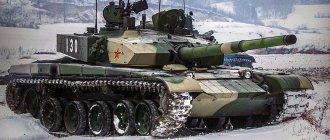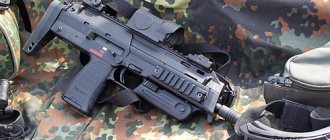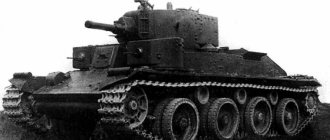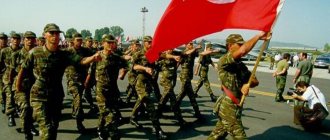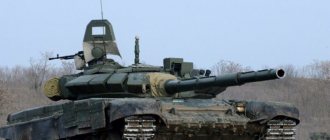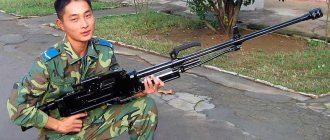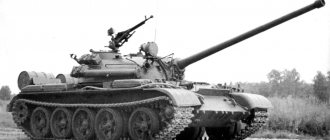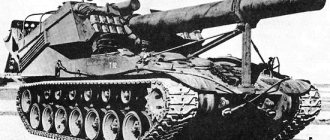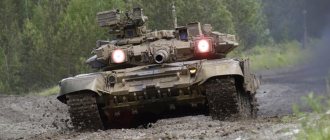| Type 81 | |
| Type 81-1 (top) and Type 81 (bottom) | |
| Type | machine |
| A country | China |
| Service history | |
| Years of use | 1981–present |
| Adopted | 1983 |
| In service | PLA, Algeria, Bangladesh, Burma, Nepal, Pakistan, Sudan, Sri Lanka |
| Wars and conflicts | Sino-Vietnamese War (1979), Sri Lankan Civil War |
| Production history | |
| Designed by | 1981 |
| Options | see options |
| Characteristics | |
| Weight, kg | 3.5 (Type 81) 3.4 (Type 81-1) |
| Length, mm | 955 730 (Type 81-1 with folded stock) |
| Barrel length, mm | 450 |
| Cartridge | 7.62×39 mm |
| Caliber, mm | 7,62 |
| Work principles | removal of powder gases, rotary bolt |
| Rate of fire, rounds/min | 650 |
| Initial bullet speed, m/s | 750 |
| Sighting range, m | 500 |
| Type of ammunition | 30-round box magazine or 75-round drum magazine |
| Aim | front sight in a ring muzzle and a reversible open rear sight |
The Type 81
is a Chinese assault rifle designed to replace the Type 56 and Type 63 assault rifles in service with the PLA.
Created on the basis of SCS
It was put into service in 1981 and was used in a number of border conflicts with Vietnam in the mid-1980s, where it demonstrated some superiority over the Kalashnikov assault rifle due to its longer barrel length.
In 1995, the PLA began replacing the Type 81 with the QBZ-95.
Description
Electronic counting frequency meters Ch3-85/4, Ch3-85/5, Ch3-85/6 are built on ultra-large-scale integrated circuits and FPGA technology. Frequency meters Ch3-85/5 and Ch3-85/6 have the functions of measuring frequency, period, time interval, pulse duration, duty cycle, number of pulses, phase difference, frequency ratio. Frequency counters Ch3-85/4 do not have the functions of measuring time interval, pulse duration, duty cycle, number of pulses, or phase difference. When performing frequency measurements on channel 1, statistical processing of the measurement result is provided: average, minimum, maximum and relative values, standard deviation, Allan deviation. Frequency counters have a built-in quartz oscillator with a clock frequency of 10 MHz, as well as an input for connecting an external source of a clock frequency of 5 MHz or 10 MHz. The devices have a tunable measuring frequency range, small dimensions, and a simple control system.
Three modifications (models) of frequency meters differ in the number of indicator digits, options for expanding the frequency range and measuring functions.
A photograph of the general view of frequency meters is shown in Figure 1.
HOUR-OTOMEREPECTRON-COUNTABLECHE-vbLb
'l
' 1 ChS1SH W
■■V
43056* 9 l.c'Sr
| -SH | n*l: lift | ||
| Ch11.PV1L | I | R^rls 1 U-1 | P.kpgl |
| O-PchiCh- | G HfMoq | Pishg. | |
| □ RU'RS | SfS-rtIri, | ||
| 1! LUC' | No. и11аьп | |
Figure 1 — Photo of a general view of frequency meters
On the back panel of the frequency counters (Figure 2) there is a power cord connector, a warranty seal, a reference oscillator output, external trigger and external reference oscillator inputs, as well as a sticker indicating the reference oscillator option used in the frequency counter.
Main battle tank "type 85" and "type 96"
The Type 85 tank became a turning point in Chinese tank building, completing a line of numerous modernizations and improvements to the previous Type 59/79/80 tank series. The tank was first shown in 1986. The main difference between the new tank and previous tanks is the welded turret with a developed rear niche.
The layout of the tank is classic. The hull and turret have a combined multi-layer armor in the frontal projection, which can be supplemented with a hinged armor plating. The first prototype of the vehicle had the chassis of a Type 88 tank, but the vehicle was put into mass production with a modified rear hull and mechanical support. The combat weight increased slightly and amounted to about 39.5 tons.
The tank's turret is welded from rolled and cast parts and has a modular design, which greatly facilitates the replacement of armor elements. The cheekbones of the turret are made hollow and filled, probably with ceramic filler, which significantly increases the resistance of the frontal projection of the turret from cumulative and sub-caliber projectiles.
The first samples of the tank were armed with a 105 mm Type 83 rifled gun, the same as on the Type 80/88 tanks.
The gun is stabilized in 2 planes and can fire all standard 105 mm ammunition produced in China.
Storm-I/"type 85-I"
A modification “type 85-I” was produced in a small series. Externally, the tank was distinguished by the presence of a new welded armor with combined armor. The tank was equipped with the new ISFCS-212 fire control system with combined gunner and commander sights and a built-in laser rangefinder. Type 85 tanks of all modifications, including Type 85-IIM and Type 96, are equipped with a sight with a night channel based on a 2nd generation image intensifier operating in passive mode.
Combined sight of the Type 96A tank.
The latest modification of the tank uses a commander's sighting system developed for the MBT-2000 export tank with a thermal imaging channel.
The commander's observation complex provides daytime observation with a magnification of 1X and 5X at a viewing angle of 16 and 7.5° and has an infrared channel for operation at night with a magnification of 7.2X at a viewing angle of 7.5° degrees. Visibility at night up to 800 m.
Diesel engine 12150L7BW with 730 hp. allows you to reach highway speeds of up to 57 km/h. The engine is a development of the 12150L-7 diesel engine, which was used on the Type 59 tank, which in turn is a modification of the Soviet B-54 diesel engine. The power reserve was about 500 km.
A further improvement of the Type 85-I tank was the Type 85-II MBT. The vehicle was first shown in 1989 at the Dubai 89 arms exhibition.
Compared to previous modifications, the Type 85-II tank had an increased hull length and a modified MTO layout: the roof was raised due to a different location of the engine cooling system and radiators, aft internal fuel tanks were added, holders for additional fuel tanks were installed, with which the range increased to 600 km.
A further development of the Type 85-II tank was the Type 85-IIM MBT (Type 85-IIAP). The vehicle became the first tank in Chinese tank construction equipped with an automatic loader (AZ) and armed with a 125-mm GSP.
Serial production of the tank began in 1992. The tank was also supplied to the Pakistan Army. In total, about 225 pieces were manufactured for the Pakistani armed forces. In Pakistan, the vehicles are designated "Type 85-II AR". The Type 85-IIM tank did not enter service with the Chinese People's Liberation Army (PLA).
In terms of the characteristics of the main armament and automatic loader, the Type 85-IIM tank almost completely repeats the decisions made on the T-72 tank. Quite original decisions were made by Chinese designers when creating the turret armor, which was made in the form of removable modules. The use of modular armor makes it possible to simplify the modernization of the tank with the advent of new developments in the field of creating armor, and to quickly repair combat damage.
Diagram of the turret of the Type 96 tank.
After delivering tanks to Pakistan, NORINCO began production of tanks with 125-mm GSP and AZ for the PLA. This modification was designated “type 88C”. Serial production began in 1997. Externally, the Type 88C tank is completely identical to the latest Type 85-IIM tank and has the same combat and technical characteristics. The tank was put into service under the designation “type 96”.
In the photo are PLA Type 96 tanks, on the left are modernized Type 96A tanks.
In 1995, a prototype of an improved version of the Type 85-IМ/88С tanks was developed, which received the designation Type 85-III.
"type 85-III" with installed dynamic protection.
.
The protection of the Type 85-III tank is enhanced by the Chinese-developed FY type EPS. The engine developed a power of 1000 hp, which made it possible to increase the maximum speed on the highway to 65 km/h. The tank was planned to be produced jointly with Pakistan, which was the main customer. But the tests carried out showed the insufficient reliability of the forced diesel engine in desert conditions, which forced the Pakistani side to abandon this project.
The photo shows a Type 96A tank with enhanced protection for the embrasure zone and electronic countermeasures searchlights.
Testing of various modular armor options for the modernized Type 96A tank.
A variant of the Type 96A tank with built-in dynamic protection and searchlights mounted on the sides of the turret as electronic countermeasures searchlights.
“Type 96A”, called “Al Bashir” in Sudan, the tank is assembled in Sudan under license.
According to rough estimates, the PLA has up to 900 Type 96A tanks and about 1,100 Type 96 tanks.
TACTICAL AND TECHNICAL CHARACTERISTICS
| Type 85- II M | |
| Year of adoption | ~1992 |
| Combat weight, t | 42,5 |
| Crew, people | 3 |
| Length mm with gun forward / along the hull / width along the tracks (screens) / height along the turret roof | 10,369 (with barrels)/ …./3500 (3420) / 2300 |
| Ground clearance, mm | 480-520 |
| Gun: brand, / caliber, mm / type / barrel length, barrel. | 125 / smoothbore / 51 |
| Charging type | Automatic |
| Ammunition, rds. | 42 |
| Coaxial machine gun, caliber, mm | 7,62 |
| Anti-aircraft machine guns, quantity - caliber, mm | 1-12,7 |
| Smoke grenade launcher, pcs. | 8 (2x4) |
| Information and management system | No |
| Integration with an external battle management system | No |
| Fire control system, composition | Observation and aiming devices, STV, LD, EBV, field of view stabilization (vertical and horizontal) |
| Radio station | VHF, telephone |
| Type of frontal armor of the hull and turret | Combined |
| Availability of FVU | Eat |
| Camouflage and electronic warfare equipment | Def. coloring, smoke. pomegranate. manual ex. |
| Engine bench power, hp / type | 1000 / 4-stroke diesel liquid. cooling |
| Transmission, type, brand | Mechanical |
| Chassis | Torsion bar with RMS |
| Specific power, hp/t | 23,52 |
| Maximum speed on the highway, km/h | 65 |
| Cruising range on the highway, km | 600 |
Verification
carried out according to document 54882137/3-13MP “Electronic counting frequency meters Ch3-85/4, Ch3-85/5, Ch3-85/6. Verification methodology”, approved by the State Central Inspection Center of the Federal Budgetary Institution “TsSM of the Moscow Region” on December 13, 2013.
Basic means of verification:
— rubidium frequency standard FS725 State Register No. 31222-06, frequency error per year ±5 10-10;
— hydrogen frequency and time standard Ch1-76A, State Register No. 23671-02, error
12
rate ± 1.510 per year;
— frequency comparator Ch7-1014, State Register No. 40727-09, error ± 1.510-12 per
year;
— pulse generator 81150A, State Register No. 41402-09, frequency range from 1 μHz to 240 MHz, error with external reference frequency ± 5 10-10 (± 1.5 • 10-12) per year;
— measuring signal generator E8257D with option 540, State Register No. 36797-08, frequency range from 250 kHz - 40 GHz, error with external reference frequency ± 5 10-10
(± 1.5 10-12) per year;
— diode compensation voltmeter V3-49, State Register No. 5477-76, measurement limits 10 mV - 100 V, frequency range 20 Hz - 1000 MHz, relative error SU< ± (0.2+(0.08/meas))%.
Notes
- Type 96
- International Institute for Strategic Studies.
The Military Balance 2020 / James Hackett. - London: Taylor&Francis, 2020. - P. 241. - ISBN ISBN 9781857438352. - ZTZ96 Main Battle Tank Archived June 29, 2007.
- ↑ 12
ZTZ96/Type 96 - The Chinese tank has collapsed! Tank biathlon! (Russian). Retrieved August 21, 2020.
- ZTZ96 Type 96 Main battle tank
- The Military Balance 2020 / International Institute for Strategic Studies. - Abingdon: Taylor & Francis, 2020. - 504 p. — ISBN 978-0367466398.
Overall and connection dimensions
| Model | TBG 85P |
| A, mm | 645 |
| A1, mm | |
| A2, mm | |
| B, mm | |
| B1, mm | 380 |
| B5, mm | 160 |
| B6, mm | |
| C, mm | 1230 |
| D, mm | 175-400 |
| E, mm | 180 |
| F, mm | 178 |
| R, mm | |
| Packaging dimensions LxPxH, mm | 1080x770x700 |
| Weight, kg | 78 |
general information
Model:
| Baltur TBG 85P | |
| Vendor code: | 17480010 |
| Code: | 2-10-3131 |
| Type: | Gas |
| Type description: | Two-stage |
| Power min. | 170 kW |
| Power max. | 850 kW |
| Price, rub. |
Power diagram (click on the picture to customize):
Correspondence "Burner - ramp"
| Model | Type of gas | Version | Curve on graph | Execution | P. Max**, mbar | Gas train | Gas pressure regulator with built-in filter | Burner/ramp adapter | Valve tightness monitoring device | Scheme | Note |
| TBG 85P | Nature gas | C.E. | 66A | — | 360 | 19990511 | included | 96000032 | — | B2 | — |
| CTV | 360 | 19990511 | included | 96000032 | 98000101 | B2 | 12) | ||||
| 66B | — | 360 | 19990512 | included | 96000032 | — | B2 | — | |||
| CTV | 360 | 19990512 | included | 96000032 | 98000101 | B2 | 12) | ||||
| 66C | — | 360 | 19990513 | included | 96000007 | — | B2 | — | |||
| CTV | 360 | 19990513 | included | 96000007 | 98000101 | B2 | 12) | ||||
| 66D | — | 360 | 19990514 | included | — | — | B2 | — | |||
| CTV | 360 | 19990514 | included | — | 98000101 | B2 | 12) | ||||
| 66E | — | 200 | 19990515 | 97390700 | — | — | B8 | — | |||
| CTV | 200 | 19990515 | 97390700 | — | 98000102 | B8 | 12) |
| Model | Type of gas | Version | Execution | P. Max**, mbar | Gas train | Gas pressure regulator with built-in filter | Burner/ramp adapter | Valve tightness monitoring device | LPG injector kit | Scheme | Note |
| TBG 85P | LPG | C.E. | — | 30 | 19990513 | included | 96000007 | — | 98000357 | B2 | — |
| CTV | 30 | 19990513 | included | 96000007 | 98000101 | 98000357 | B2 | 12) |
Modifications of the Tour 85 tank
- "Ture 85" (1986) - the first prototype of the tank.
- "Ture 85-I" (1988) - an experimental tank equipped with a new turret and a thermal gun casing.
- "Ture 85-III" (1989) - a prototype with a 105-mm rifled gun "Ture 83-I"
- "Type 85-IIA" - serial export model (Pakistan Day).
- "Ture 85-IIM" (1992) - modernized Toure 85-P. with a new turret and automatic loader. 125 mm smoothbore cannon with 42 rounds of ammunition and a new 12.7 mm W-85 anti-aircraft machine gun.
- "Type 85-IIAP" (1992) - a variant of the "Type 85IIM" tank for licensed production in Pakistan.
- "Ture 85-III" (1995) - an experimental tank with a 1000 hp engine. and mounted dynamic protection.
Read: Experimental tank “Leopard 1” with a turret stabilized in three planes
